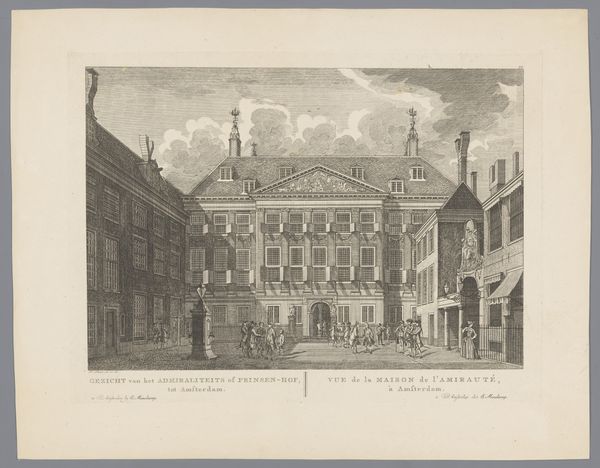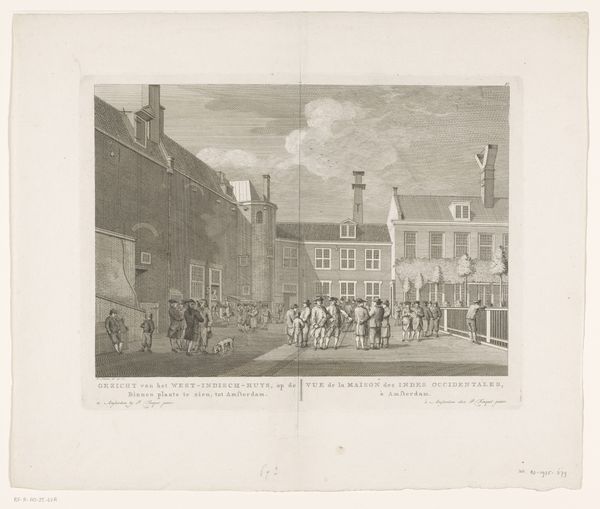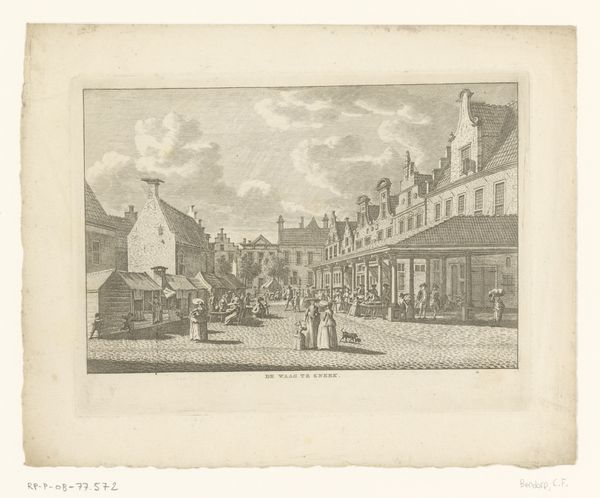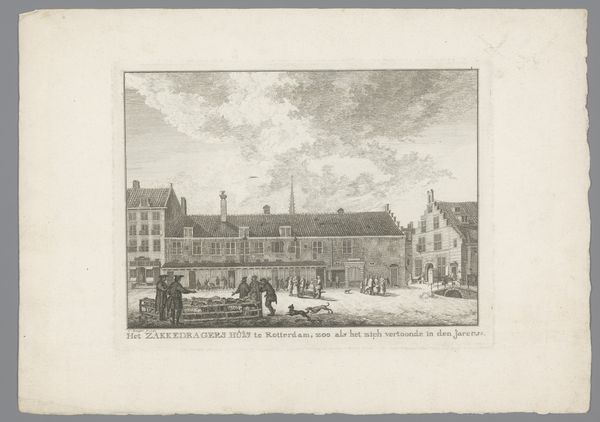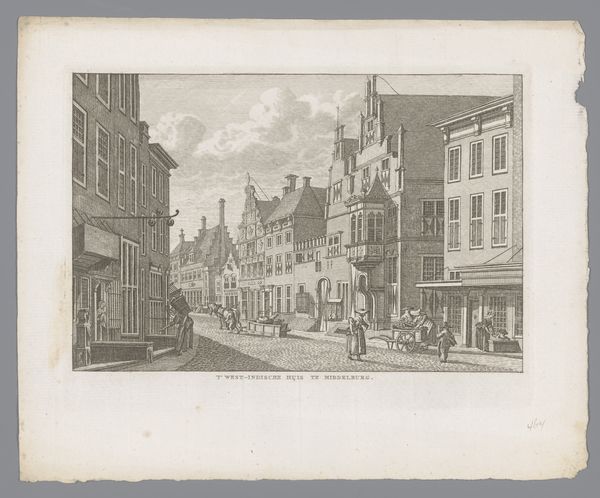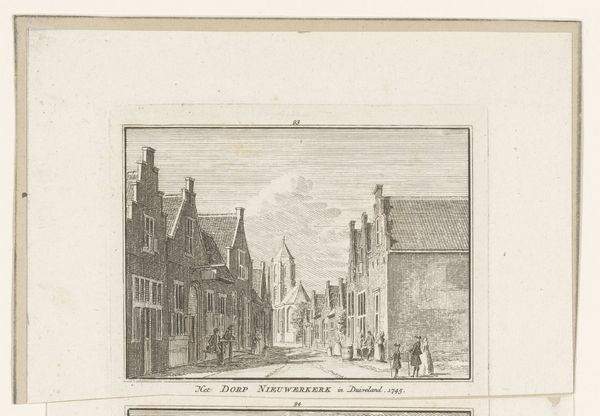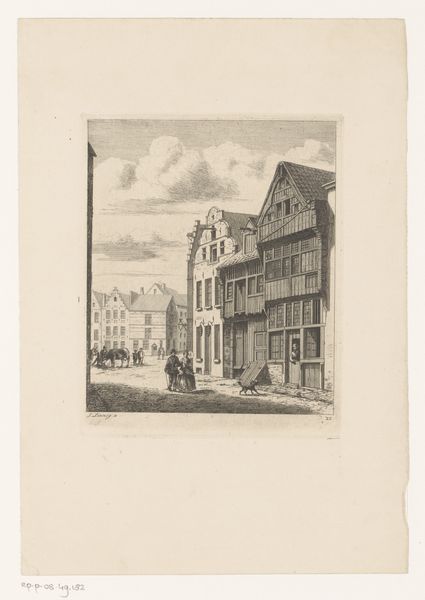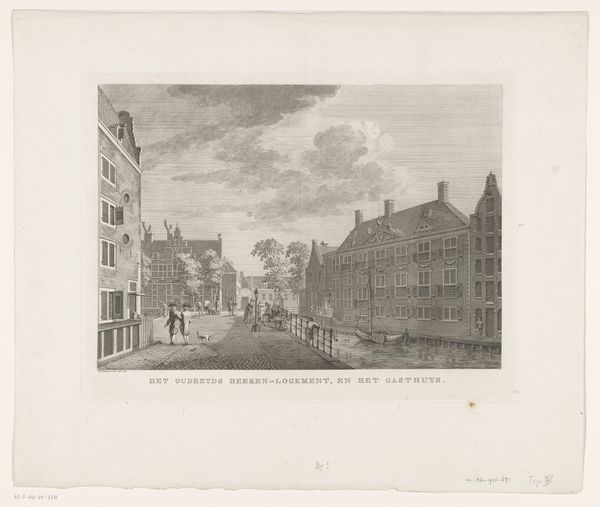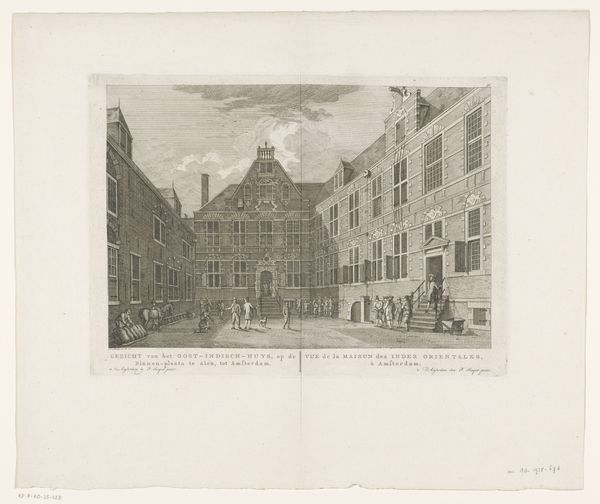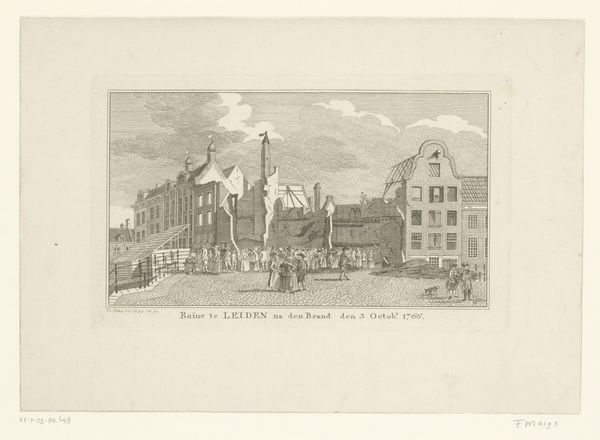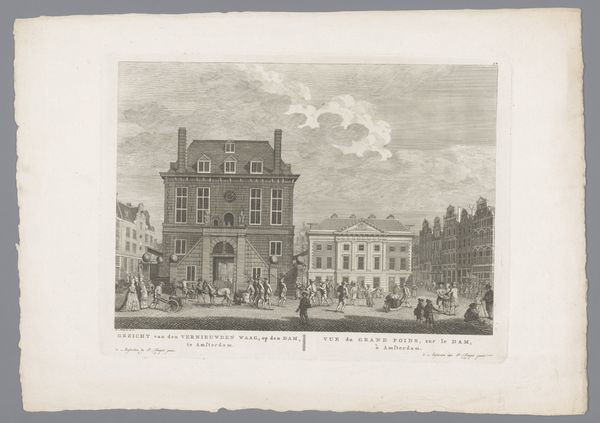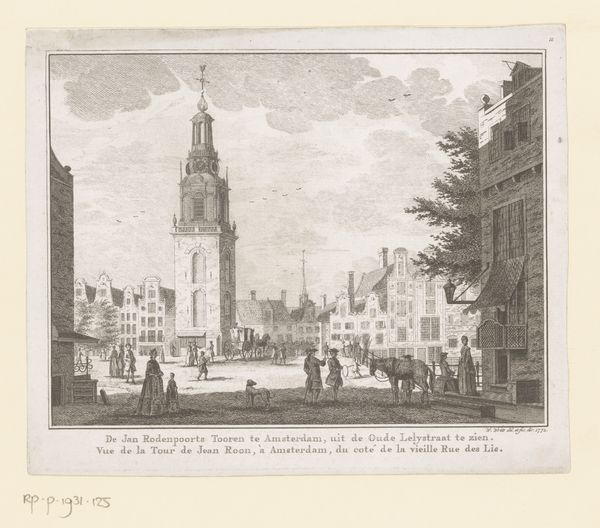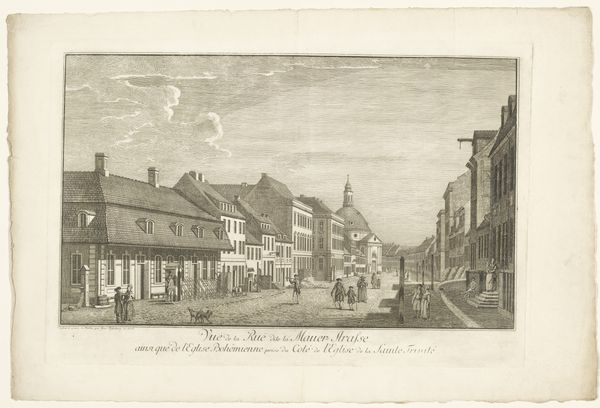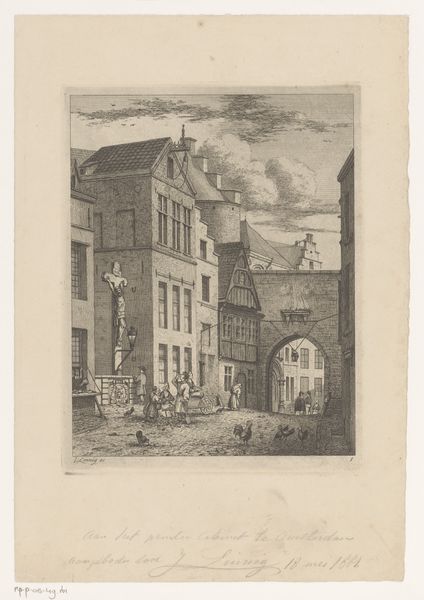
Gezicht op de binnenplaats van het West-Indisch Huis, in Amsterdam 1778 - 1783
0:00
0:00
hermanuspetrusschouten
Rijksmuseum
print, engraving, architecture
#
dutch-golden-age
# print
#
cityscape
#
engraving
#
architecture
#
realism
Dimensions: height 269 mm, width 358 mm
Copyright: Rijks Museum: Open Domain
Hermanus Petrus Schouten made this print of the courtyard of the West India House in Amsterdam. He used etching, a printmaking technique that allowed for detailed architectural representation. The West India House was the headquarters of the Dutch West India Company. Founded in the 17th century, the company monopolized Dutch trade and colonization in the Americas and West Africa. Schouten’s image, made sometime in the late 18th or early 19th century, speaks to the enduring power of this institution. We see a tranquil scene, but it’s crucial to remember the source of this wealth. The Dutch West India company profited immensely from the transatlantic slave trade, and the products of enslaved labor. As art historians, we must ask ourselves: How does Schouten’s image participate in the visual culture of Dutch colonialism? What does it mean to depict the architecture of the West India company without acknowledging the violence inherent in its economic practices? To answer these questions, we can turn to archival documents, trade records, and abolitionist pamphlets to better understand the context of this image.
Comments
No comments
Be the first to comment and join the conversation on the ultimate creative platform.
